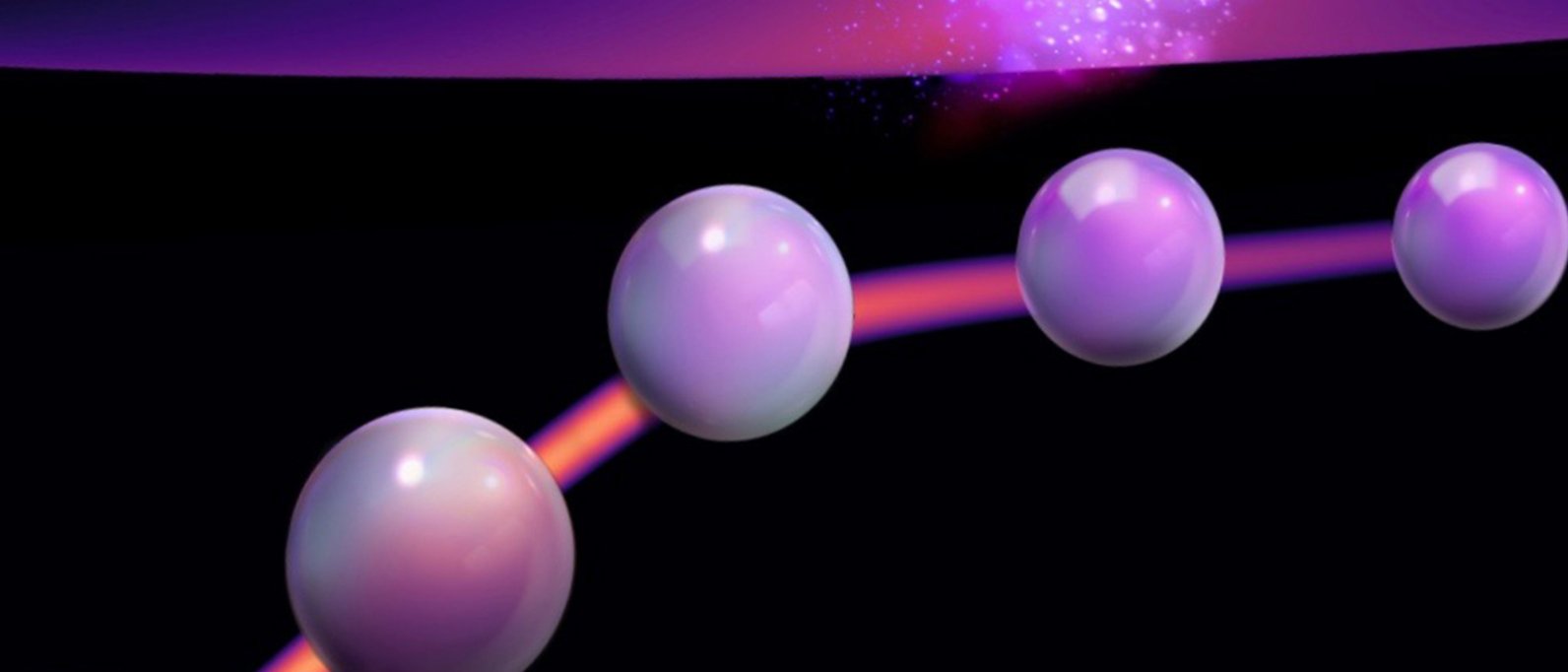Oscillating Quasiparticles: the cycle of decay and rebirth
Immortal quantum particles

As the saying goes, nothing lasts forever. The laws of physics confirm this: on our planet, all processes increase entropy, thus molecular disorder. For example, a broken glass would never put itself back together again.
Theoretical physicists at the Technical University of Munich (TUM) and the Max Planck Institute for the Physics of Complex Systems have discovered that things which seem inconceivable in the everyday world are possible on a microscopic level.
“Until now, the assumption was that quasiparticles in interacting quantum systems decay after a certain time. We now know that the opposite is the case: strong interactions can even stop decay entirely,” explains Frank Pollmann, Professor for Theoretical Solid-State Physics at the TUM. Collective lattice vibrations in crystals, so-called phonons, are one example of such quasiparticles.
The concept of quasiparticles was coined by the physicist and Nobel prize winner Lev Davidovich Landau. He used it to describe collective states of lots of particles or rather their interactions due to electrical or magnetic forces. Due to this interaction, several particles act like one single one.
Numerische Methoden eröffnen neue Perspektiven
„Welche Prozesse das Schicksal dieser Quasiteilchen in wechselwirkenden Systemen im Detail beeinflussen, war bisher allerdings nicht bekannt“, berichtet Pollmann. „Erst jetzt verfügen wir über numerische Methoden, mit denen wir komplexe Wechselwirkungen berechnen können und außerdem über Computer, die leistungsfähig genug sind, diese Gleichungen zu lösen.“
„Das Ergebnis der aufwendigen Simulation: Quasiteilchen zerfallen zwar, aus den Bruchstücken entstehen aber neue, identische Teilchengebilde“, sagt Erstautor Ruben Verresen. „Wenn dieser Zerfall sehr schnell abläuft, kommt es nach einer gewissen Zeit zu einer Umkehrung der Reaktion, und die Trümmer finden sich wieder zusammen. Dieser Prozess kann sich unendlich wiederholen, es entsteht eine anhaltende Schwingung zwischen Zerfall und Wiedergeburt.“
Diese Schwingung ist physikalisch betrachtet eine Welle, die in Materie umgewandelt wird – was gemäß dem quantenmechanischen Welle-Teilchen-Dualismus möglich ist. Damit verstoßen die unsterblichen Quasiteilchen auch nicht gegen den zweiten Hauptsatz der Thermodynamik. Ihre Entropie bleibt konstant, der Zerfall ist gestoppt.
Der Realitäts-Check
Die Entdeckung erklärt auch Phänomene, die bisher rätselhaft waren. Experimentalphysiker hatten gemessen, dass die magnetische Verbindung Ba3CoSb2O9 erstaunlich stabil ist. Magnetische Quasiteilchen, die Magnonen, sind dafür verantwortlich. Andere Quasiteilchen, die Rotonen, sorgen dafür, dass Helium, an der Erdoberfläche ein Gas, am absoluten Nullpunkt eine Flüssigkeit wird, die widerstandslos fließen kann.
„Unsere Arbeit ist reine Grundlagenforschung“, betont Pollmann. Es sei aber gut möglich, dass die Ergebnisse eines Tages auch Anwendungen erlauben – beispielsweise den Bau langlebiger Datenspeicher für zukünftige Quantencomputer.
Ruben Verresen, Roderich Moessner & Frank Pollmann
Avoided quasiparticle decay from strong quantum interactions
nature physics, May 27, 2019 – DOI: 10.1038/s41567-019-0535-3
The research work was funded by the European Research Council (ERC) and the German Research Foundation (DFG) within the framework of the [Collaborative Research Center] SFB 1143, the Research Unit FOR1807 as well as the cluster of excellence Nanosystems Initiative Munich (NIM). Work will be carried on in the cluster of excellence Munich Center for Quantum Science and Technology (MCQST).
Technische Universität München
Corporate Communications Center
- Dr. Andreas Battenberg
- presse@tum.de
- Teamwebsite
Kontakte zum Artikel:
Prof. Dr. Frank Pollmann
Professorship for Theoretical and Solid State Physics
James-Franck-Str. 1, 85748 Garching
Tel.: +49 89 289 53760 – e-Mail: frank.pollmann@tum.de
Web: http://tccm.pks.mpg.de